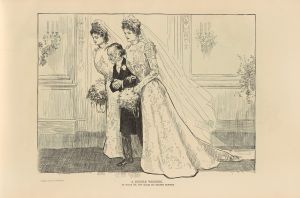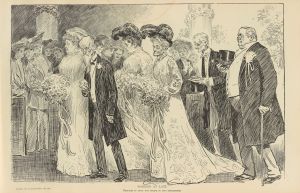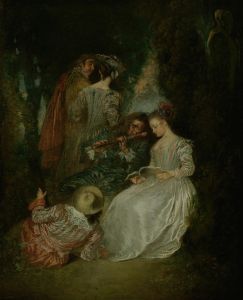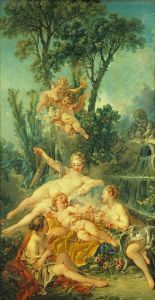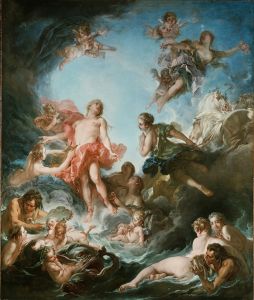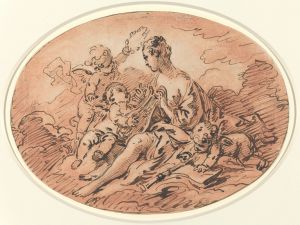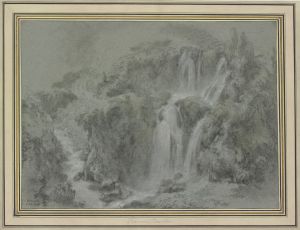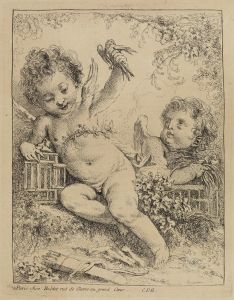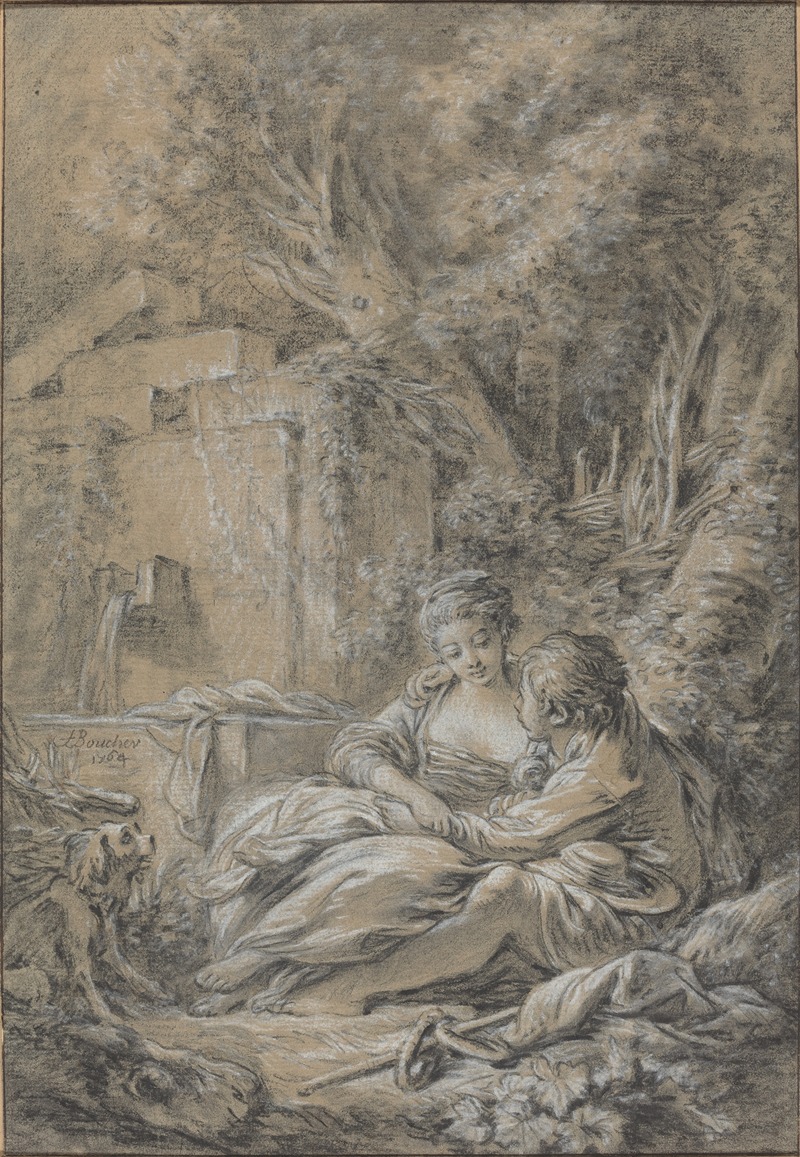
Tête-à-tête
A hand-painted replica of François Boucher’s masterpiece Tête-à-tête, meticulously crafted by professional artists to capture the true essence of the original. Each piece is created with museum-quality canvas and rare mineral pigments, carefully painted by experienced artists with delicate brushstrokes and rich, layered colors to perfectly recreate the texture of the original artwork. Unlike machine-printed reproductions, this hand-painted version brings the painting to life, infused with the artist’s emotions and skill in every stroke. Whether for personal collection or home decoration, it instantly elevates the artistic atmosphere of any space.
François Boucher, a prominent French painter of the Rococo style, is renowned for his idyllic and voluptuous paintings that often depict classical themes, pastoral scenes, and intimate domestic settings. One of his notable works is "Tête-à-tête," a painting that exemplifies his mastery in capturing the elegance and playful charm characteristic of the Rococo period.
"Tête-à-tête," which translates to "head-to-head" or "face-to-face," typically refers to an intimate conversation or private meeting between two people. This theme is reflected in Boucher's painting, where he skillfully portrays a moment of personal interaction, often imbued with a sense of romance or flirtation. The painting is a quintessential example of Boucher's ability to blend narrative with decorative beauty, a hallmark of his artistic approach.
Boucher's work is celebrated for its soft color palette, intricate details, and the graceful depiction of figures. In "Tête-à-tête," these elements come together to create a scene that is both lively and serene. The figures are often dressed in elegant, flowing garments that reflect the fashion of the 18th century, and the setting is typically lush and ornate, filled with delicate furnishings and natural elements that enhance the intimate atmosphere.
The composition of "Tête-à-tête" is carefully arranged to draw the viewer's attention to the interaction between the figures. Boucher's use of light and shadow adds depth to the scene, highlighting the expressions and gestures that convey the narrative of the painting. The artist's attention to detail is evident in the textures of the fabrics, the play of light on the skin, and the intricate backgrounds that provide context to the intimate exchange.
François Boucher was a favorite of Madame de Pompadour, the chief mistress of King Louis XV, and his works were highly sought after by the French aristocracy. His paintings, including "Tête-à-tête," were often commissioned to adorn the private salons and boudoirs of the elite, where they served as both decoration and conversation pieces. Boucher's ability to capture the essence of the Rococo style—its emphasis on pleasure, beauty, and the ephemeral nature of life—made him one of the most celebrated artists of his time.
While specific details about the provenance and current location of "Tête-à-tête" may not be widely documented, Boucher's influence on the art world is undeniable. His works continue to be studied and admired for their technical skill and their embodiment of the Rococo spirit. "Tête-à-tête," like many of Boucher's paintings, offers a glimpse into the leisurely and opulent lifestyle of 18th-century France, capturing moments of intimacy and elegance that transcend time.
In summary, "Tête-à-tête" by François Boucher is a testament to the artist's ability to blend narrative with decorative art, creating a scene that is both intimate and visually captivating. Through his use of color, composition, and detail, Boucher invites viewers into a world of elegance and charm, characteristic of the Rococo period. His work remains a significant part of art history, celebrated for its beauty and its reflection of the cultural values of its time.






